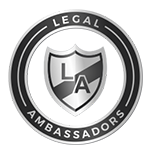Client, a teacher with a professional license on the line, was charged with misdemeanor DUI under Vehicle Code sections 23152(a) and (b). The officer claimed the signs of intoxication were obvious and that the case was clear. After a full jury trial, the verdict was not guilty, and our client’s career and license were saved.
Our client was stopped late at night for alleged lane deviations. The officer testified that she showed the classic “signs of intoxication,” including bloodshot eyes, slurred speech, and the odor of alcohol. He reported that she failed the field sobriety tests and insisted she was unfit to drive.
Our investigation revealed a very different story. We discovered that the officer’s report was incomplete and misleading. On cross-examination, we highlighted key omissions, including the fact that there was blood on the driver’s seat from a prior, unrelated injury. The officer left this out of his report because it undermined his claim that the client’s appearance and movements showed impairment.
At trial, we forced the officer to admit to these omissions and inconsistencies. The chemical evidence was far from conclusive, and without the officer’s credibility, the prosecution’s case collapsed.
The jury returned a verdict of not guilty.
This result protected the client’s freedom and preserved her professional license. It demonstrates the importance of thorough investigation, careful attention to detail, and aggressive cross-examination in high-stakes DUI cases.
















